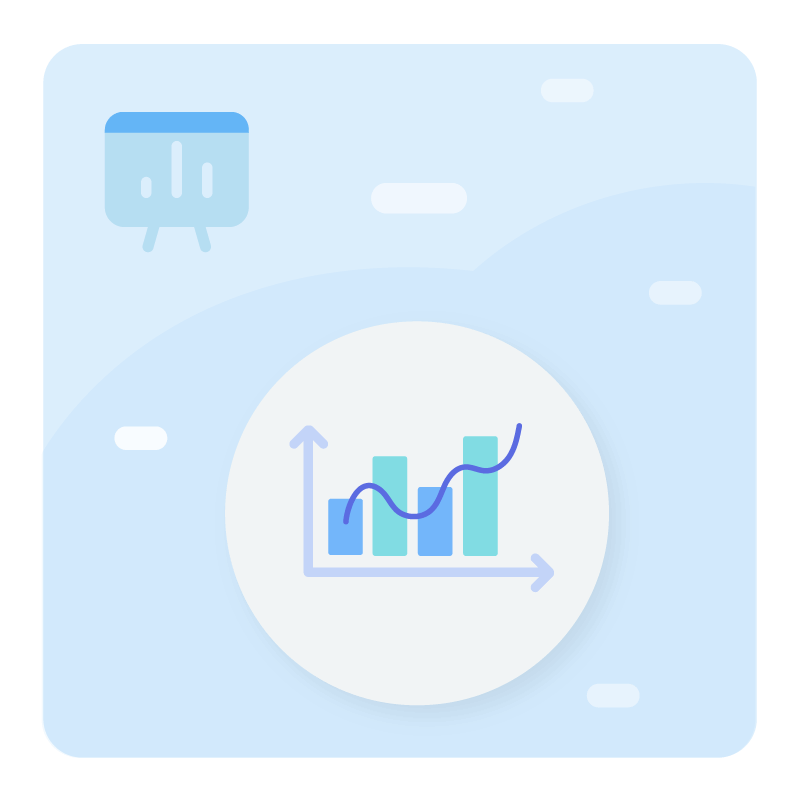Summary
Call flow is essential for customer interactions over the phone, acting as a map that directs incoming calls through your system so the customer receives what they need. This concept helps ensure a high-quality customer experience by defining each step, from receiving the call to connecting it with the right agent or department. It includes greetings, IVR menus, automated transfers, and voicemail.
What is call flow?
Call flow, or call process, is a key concept in business phone communication management. It defines the structure organizing incoming and outgoing calls through a set of predefined rules.
This structure is often represented as a diagram, illustrating the path an incoming call follows from start to finish. Each step of the call flow corresponds to a specific action: voice prompts, interactive menus, call redirections, satisfaction surveys, smart routing, caller number-based routing, and voicemail services.
Call flows frequently use interactive voice response (IVR) systems, allowing callers to select options via their phone keypad. These selections then direct the call to the most suitable department or agent.
For example, you can set up your system so that when a caller presses "1," they are immediately redirected to a customer support agent.
Additionally, call flows can be enhanced with artificial intelligence (AI) to improve call handling. Virtual assistants (Voicebots) can interact with callers, gather initial information, suggest self-service solutions, and, if necessary, transfer the call to a human agent.
How to Manage Call Flows in a Business?
Effective call flow management is essential for maintaining high-quality customer relations and optimizing business resources. Here are three key strategies to ensure optimal management.
1. Creating a Dedicated Inbound Call Service
Setting up a specialized service to handle incoming calls helps centralize and organize call management. This ensures that each call is handled efficiently, reducing confusion and delays.
2. Implementing Intelligent Call Routing Solutions
Systems like Interactive Voice Response (IVR) automatically direct callers to the right department or agent based on their request, interaction history, or call time, enhancing the customer journey and resource efficiency. Setting up an IVR menu is easy when you subscribe to a business phone system like Ringover, which provides an intuitive and visual IVR builder tool.
3. Using Call Management Software for Contact Centers
These advanced tools integrate with CRM and helpdesk software, improving customer service while providing detailed analytics for performance tracking and real-time monitoring.
What Are the Benefits of a Good Call Flow?
An optimized call flow brings multiple advantages to businesses by enhancing customer experience and internal efficiency. Here are five key benefits:
1. Improving Caller Experience
A well-designed call flow guides callers through clearly defined steps, reducing wait time and making the experience faster and more enjoyable.
✅ Enhances caller satisfaction by quickly directing them to the right destination, which is crucial for maintaining strong customer relationships.
2. Increasing Internal Productivity
With automated call qualification and transfers, agents spend less time on repetitive tasks and focus on important interactions.
✅ Callers select their own path, engaging with agents only for relevant inquiries, leading to higher productivity and lower stress levels for support teams.
3. Personalizing Customer Service
A customized call flow tailors the experience to each caller's specific needs.
✅ Callers are connected with the most qualified agent, increasing first-call resolution rates and reducing average handling time.
4. Reducing Operational Costs
By optimizing call routing, businesses reduce staffing costs and overtime expenses.
✅ Better workforce planning helps cut operational costs while maximizing return on investment (ROI).
5. Managing High Call Volumes More Effectively
A structured call flow ensures smooth handling of call volume fluctuations.
✅ Managers can anticipate peak times and allocate staff accordingly, reducing wait times and improving customer service quality.
In addition to its IVR Builder, Ringover offers powerful call routing features that help businesses easily manage both inbound and outbound calls.
Optimize Your Call Flows with Ringover's IVR System
As mentioned earlier, Ringover offers an advanced IVR solution (Interactive Voice Response) to customize call flows efficiently.
Ringover makes IVR configuration simple with its visual, user-friendly IVR editor.
With this tool, you can:
- Create interactive menus to guide inbound calls.
- Record custom voice messages for different call scenarios.
- Schedule customer satisfaction surveys to collect feedback.
Manage your call queue effectively:
- Customize call queues by setting clear distribution rules to reduce caller wait times.
- Notify callers of their position in the queue and use wait time to promote special offers or events, improving customer engagement.
- Prioritize VIP contacts to ensure faster service without long wait times.
Benefit from CRM integration & call history:
- Agents receive real-time data, allowing them to provide personalized and informed responses.
- CTI (Computer Telephony Integration) syncs information between software tools, simplifying post-call tasks.
Simplify call analytics & performance monitoring:
- Access detailed reports and optimize your call flow based on real-time insights.
Key Insights on Call Flow and Its Optimization
A well-structured call flow is essential to ensuring an exceptional customer experience and improving business performance. It defines the path of incoming calls, from reception to resolution, integrating IVR menus, automatic transfers, and customized queues.
Efficient call flow management requires:
- Anticipating call volumes
- Implementing automation
- Using intelligent routing systems
- Customizing call queues to reduce wait times and enhance customer satisfaction
🚀 To improve your call management, explore Ringover and its Interactive Voice Response (IVR) builder. These tools allow you to design customized call flows, automate repetitive tasks, and provide a personalized customer experience.
👉 Try our solutions for free!
Call Flow FAQ
What is a call flow?
A call flow is a detailed diagram that outlines how incoming calls are managed within your company's phone system. It illustrates each step of the process, from the moment the call is received to its connection with the appropriate agent, including IVR menus, welcome messages, and automated call transfers.
What is call flow management?
Call flow management refers to the process of directing incoming calls within your phone system. This process varies based on the services you provide, such as:
- Customer support
- Call transfers to different departments
- Location-based call routing
This system ensures that callers efficiently progress to their final destination.
How does an interactive voice server (IVR) work?
An IVR (Interactive Voice Response) system uses computer-telephony integration (CTI) and natural language processing to guide callers. When a caller dials your number, they are greeted by voice menus, allowing them to select options using their phone keypad. These selections send DTMF (Dual-Tone Multi-Frequency) signals to the system, which determines the next action based on the caller's choice. IVRs can also include submenus and personalized welcome messages to enhance the caller experience.
What makes a good call flow?
A good call flow is clear and easy to navigate, reducing wait times and caller frustration. It should include:
- Smart routing options (e.g., skill-based routing, directing calls to the most qualified agents)
- IVR integration for automation and personalized caller experiences
- Continuous monitoring and optimization to maintain high-quality customer service



